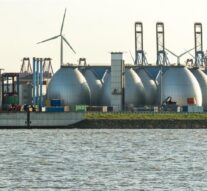
Can FRONTEX contribute in critical infrastructure protection in the EU?
Migration 28 April 2023Estimated time of reading: ~ 3 minutes
Illegal migration and critical infrastructure protection are two issues that are often discussed in the same breath in the EU. This is because illegal migration might poses a threat to critical infrastructure, such as transportation systems, energy networks, and communication systems.
When large numbers of people attempt to cross borders illegally, they can put a strain on these systems, causing disruptions and potentially even damage. One example of this is the situation in the Mediterranean, where thousands of migrants attempt to cross from North Africa to Europe each year. This puts a strain on the resources of the countries in the region, as they are forced to deal with the influx of migrants and the strain on their infrastructure.
The EU has implemented a range of policies and initiatives aimed at improving critical infrastructure protection and reducing illegal migration. One key initiative is the European Border and Coast Guard Agency (Frontex), which is responsible for managing the EU’s external borders and protecting critical infrastructure in the region. Frontex has been instrumental in helping EU member states to manage the influx of migrants and secure their borders, providing technical and operational assistance to member states. By working closely with member states, Frontex develops new technologies and approaches to border security, including the use of drones and other surveillance tools. Another important initiative in this area is the EU’s Critical Infrastructure Protection (CIP) program. This program is aimed at identifying and protecting critical infrastructure in the EU, such as power plants, transportation systems, and communication networks. The goal is to ensure that these systems are resilient and can withstand potential attacks or disruptions.
In its annual report, FRONTEX identifies technological advancements, such as artificial intelligence (AI), to have the potential to automate and improve certain systems in border management. However, the introduction of new technologies also provides opportunities for tech-savvy criminals. This is especially concerning given the rising threat of transnational criminal networks, which are increasingly using sophisticated methods to evade border controls and smuggle goods and people across borders. However, from the development of new technologies and approaches to border security, to the implementation of critical infrastructure protection measures, the EU is working to enhance its resilience and security in the face of these complex challenges.
Written by: Nenad Stekić



